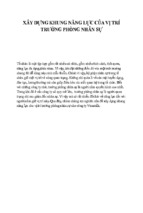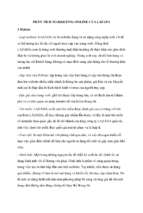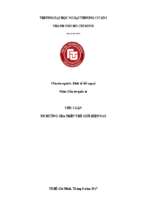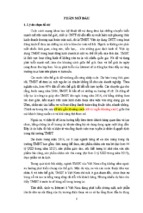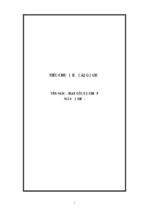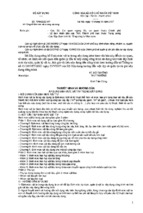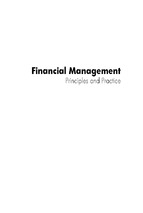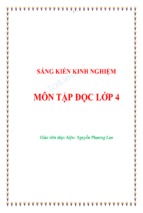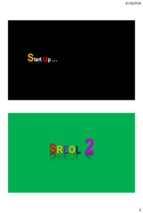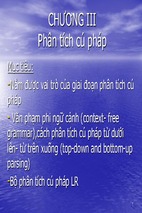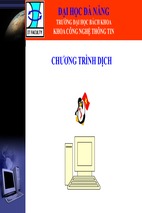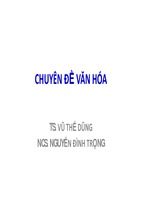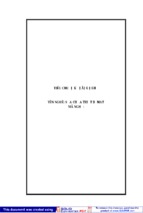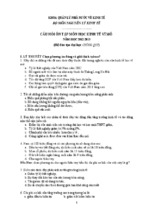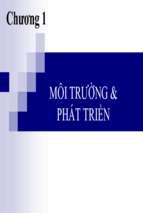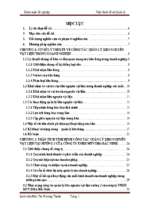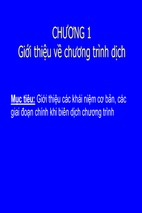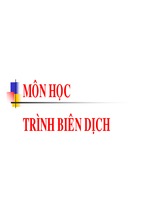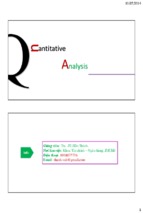Jeff Bray
Consumer Behaviour Theory: Approaches and Models
Consumer Behaviour Theory: Approaches and Models...............................................2
1.1 Consumer behaviour & consumer decision making ............................................2
1.2 Theoretical approaches to the study of consumer behaviour..............................3
1.3 Economic Man .....................................................................................................4
1.4 Psychodynamic Approach ...................................................................................4
1.5 Behaviourist Approach ........................................................................................5
1.6 Cognitive Approach .............................................................................................6
1.6.1 Cognitive Models of Consumer Behaviour ..................................................9
1.6.1.1 Analytic Cognitive Models ..................................................................10
1.6.1.2. Prescriptive Cognitive Models............................................................20
1.7 Humanistic Approach ........................................................................................25
1.7.1 Humanistic Models of Consumer Behaviour..............................................25
1.9 Summary ............................................................................................................28
References................................................................................................................29
Figure 1.1: Stimulus-Organism-Response Model of Decision Making........................7
Figure 1.2: Cognitive Consumer Behaviour Models ..................................................10
Figure 1.3: Major components of the Theory of Buyer Behavior ..............................11
Figure 1.4: The Theory of Buyer Behavior ................................................................12
Figure 1.5: Consumer Decision Model.......................................................................16
Figure 1.6: Fishbein Model expressed algebraically. ..................................................20
Figure 1.7: Theory of Reasoned Action......................................................................21
Figure 1.8: Theory of Planned Behaviour....................................................................22
Figure 1.9: Theory of Trying ......................................................................................27
Figure 1.10: Model of Goal-Directed Behaviour........................................................28
1 of 33
Jeff Bray
Consumer Behaviour Theory: Approaches and Models
Consumer Behaviour Theory: Approaches and
Models
1.1 Consumer behaviour & consumer decision making
Consumer decision making has long been of interest to researchers. Beginning about
300 years ago early economists, led by Nicholas Bernoulli, John von Neumann and
Oskar Morgenstern, started to examine the basis of consumer decision making
(Richarme 2007). This early work approached the topic from an economic
perspective, and focused solely on the act of purchase (Loudon ANDDella Bitta
1993). The most prevalent model from this perspective is ‘Utility Theory’ which
proposes that consumers make choices based on the expected outcomes of their
decisions. Consumers are viewed as rational decision makers who are only concerned
with self interest (Schiffman ANDKanuk 2007, Zinkhan 1992).
Where utility theory views the consumer as a ‘rational economic man’ (Zinkhan
1992), contemporary research on Consumer Behaviour considers a wide range of
factors influencing the consumer, and acknowledges a broad range of consumption
activities beyond purchasing. These activities commonly include; need recognition,
information search, evaluation of alternatives, the building of purchase intention, the
act of purchasing, consumption and finally disposal. This more complete view of
consumer behaviour has evolved through a number of discernable stages over the past
century in light of new research methodologies and paradigmatic approaches being
adopted.
While this evolution has been continuous, it is only since the 1950’s that the notion of
consumer behaviour has responded to the conception and growth of modern
marketing to encompass the more holistic range of activities that impact upon the
consumer decision (Blackwell,Miniard et al. 2001). This is evident in contemporary
definitions of consumer behaviour:
2 of 33
Jeff Bray
Consumer Behaviour Theory: Approaches and Models
“consumer behaviour…… is the study of the processes involved when
individuals or groups select, purchase, use or dispose of products,
services, ideas or experiences to satisfy needs and desires.”
(Solomon,Bamossy et al. 2006, p6).
(Schiffman ANDKanuk 2007) take a similar approach in defining consumer
behaviour:
“the behavior that consumers display in searching for, purchasing, using,
evaluating, and disposing of products and services that they expect will
satisfy their needs” (p.3).
While most contemporary definitions of consumer behaviour are similar in scope,
section 1.2 will identify and discuss the differing psychological approaches that have
been applied to research in this area.
1.2 Theoretical approaches to the study of consumer
behaviour
A number of different approaches have been adopted in the study of decision making,
drawing on differing traditions of psychology. Writers suggest different typological
classifications of these works with five major approaches emerging. Each of these
five approaches posit alternate models of man, and emphasise the need to examine
quite different variables (Foxall 1990); they will briefly be introduced in turn.
•
Economic Man
•
Psychodynamic
•
Behaviourist
•
Cognitive
•
Humanistic
3 of 33
Jeff Bray
Consumer Behaviour Theory: Approaches and Models
1.3 Economic Man
As identified in section 1.1, early research regarded man as entirely rational and self
interested, making decisions based upon the ability to maximise utility whilst
expending the minimum effort. While work in this area began around 300 years ago
(Richarme 2007), the term ‘economic man’ (or even Homo economicus (Persky
1995)) was first used in the late 19th century (Persky 1995) at the start of more
sustained research in the area.
In order to behave rationally in the economic sense, as this approach suggests, a
consumer would have to be aware of all the available consumption options, be
capable of correctly rating each alternative and be available to select the optimum
course of action (Schiffman ANDKanuk 2007). These steps are no longer seen to be
a realistic account of human decision making, as consumers rarely have adequate
information, motivation or time to make such a ‘perfect’ decision and are often acted
upon by less rational influences such as social relationships and values (Simon 1997).
Furthermore, individuals are often described as seeking satisfactory rather than
optimum choices, as highlighted by Herbert Simons Satisficing Theory (Simon 1997),
or Kahneman and Tversky’s Prospect Theory (Kahneman ANDTversky 1979) which
embrace bounded rationality (Simon 1991).
1.4 Psychodynamic Approach
The psychodynamic tradition within psychology is widely attributed to the work of
Sigmund Freud (1856-1939) (Stewart 1994). This view posits that behaviour is
subject to biological influence through ‘instinctive forces’ or ‘drives’ which act
outside of conscious thought (Arnold,Robertson et al. 1991). While Freud identified
three facets of the psyche, namely the Id, the Ego and the Superego (Freud 1923),
other theorists working within this tradition, most notably Jung, identified different
drives (Ribeaux ANDPoppleton 1978).
The key tenet of the psychodynamic approach is that behaviour is determined by
biological drives, rather than individual cognition, or environmental stimuli.
4 of 33
Jeff Bray
Consumer Behaviour Theory: Approaches and Models
1.5 Behaviourist Approach
In 1920 John B. Watson published a landmark study into behaviour which became
known as ‘Little Albert’ (Watson ANDRayner 1920). This study involved teaching a
small child (Albert) to fear otherwise benign objects through repeated pairing with
loud noises. The study proved that behaviour can be learned by external events and
thus largely discredited the Psychodynamic approach that was predominant at the
time.
Essentially Behaviourism is a family of philosophies stating that behaviour is
explained by external events, and that all things that organisms do, including actions,
thoughts and feelings can be regarded as behaviours. The causation of behaviour is
attributed to factors external to the individual. The most influential proponents of the
behavioural approach were Ivan Pavlov (1849-1936) who investigated classical
conditioning, John Watson (1878-1958) who rejected introspective methods and
Burrhus Skinner (1904-1990) who developed operant conditioning. Each of these
developments relied heavily on logical positivism purporting that objective and
empirical methods used in the physical sciences can be applied to the study of
consumer behaviour (Eysenck ANDKeane 2000).
There are a number of branches of research that conform to the major tenets of
behaviourism, but differ subtly in other ways. Initially ‘Classical Behaviourism’,
established by John Watson, required the entirely objective study of behaviour, with
no mental life or internal states being accepted. Human thoughts were regarded by
Watson as ‘covert’ speech (Sternberg 1996), and strict monism was adhered to
(Foxall 1990). Between 1930 and 1950 Skinner founded ‘Radical Behaviourism’
which acknowledges the existence of feelings, states of mind and introspection,
however still regards these factors as epiphenomenal (Skinner 1938);(Nye 1979). The
assumed role of internal processes continued to evolve in subsequent decades, leading
to more cognitive approaches with a new branch of study ‘Cognitive Behaviourism’
claiming that intrapersonal cognitive events and processes are causative and the
primary irreducible determinants of overt behaviour (Hillner 1984, p107).
5 of 33
Jeff Bray
Consumer Behaviour Theory: Approaches and Models
While behavioural research still contributes to our understanding of human behaviour,
it is now widely recognised as being only part of any possible full explanation
(Stewart 1994). Behaviourism does not appear to adequately account for the great
diversity of response generated by a population exposed to similar, or even near
identical stimuli.
1.6 Cognitive Approach
In stark contrast to the foundations of Classical Behaviouralism, the cognitive
approach ascribes observed action (behaviour) to intrapersonal cognition. The
individual is viewed as an ‘information processor’ (Ribeaux ANDPoppleton 1978).
This intrapersonal causation clearly challenges the explicative power of
environmental variables suggested in Behavioural approaches, however an influential
role of the environment and social experience is acknowledged, with consumers
actively seeking and receiving environmental and social stimuli as informational
inputs aiding internal decision making (Stewart 1994).
The Cognitive approach is derived in a large part from Cognitive Psychology which
can trace its roots back to early philosophers such as Socrates who was interested in
the origins of knowledge (Plato 360 B.C.), Aristotle who proposed the first theory of
memory (Aristotle 350 B.C.) and Descartes who explored how knowledge is
represented mentally in his Meditations (Descartes 1640) (Sternberg 1996). It was
not until the middle of the 21st Century however, that Cognitive Psychology truly
emerged as a mainstream and useful field of study with the development of the
Stimulus-Organism-Response model by Hebb during the 1950’s (Figure 1.1) (Cziko
2000) and the publication of the landmark text by Ulric Neisser in 1967 (Neisser
1967). From this point many writers suggested that Cognitivism had taken over from
Behaviourism as the dominant paradigmatic approach to decision research (Furedy
ANDRiley 1987).
6 of 33
Jeff Bray
Consumer Behaviour Theory: Approaches and Models
Figure 1.1: Stimulus-Organism-Response Model of Decision Making
Stimulus
Organism
Response
Source: (Cziko 2000)
While there are distinct branches of cognitive psychology, they all share an abiding
interest in exploring and understanding the mental structures and processes which
mediate between stimulus and response (Kihlstrom 1987). Contemporary Cognitive
Psychology has identified and developed a wide range of factors which are thought
fundamental to these intrapersonal processes including: perception, learning, memory,
thinking, emotion and motivation (Sternberg 1996). While this is far from a complete
list of the possible constructs at play, it does serve to outline the complexity and
multiplicity of issues inherent with this approach.
Early Stimulus-Organism-Response models (as depicted in Figure 1.1) suggest a
linear relationship between the three stages with environmental and social stimuli
acting as external antecedents to the organism. This approach assumes that stimuli act
upon an inactive and unprepared organism (Eysenck ANDKeane 2000). Most
modern theorists now, however, acknowledge that information processing is
conducted by an active organism whose past experience will influence not only the
processing of such information but even what information is sought and received.
Information processing will be both stimulus driven and concept driven (Moital
2007); (Groome,Dewart et al. 1999). This development has resulted in more recent
depictions of consumer decision making being circular in fashion (Peter ANDOlson
2008), or drawn through a Venn diagram (Jacoby 2002).
Despite coming from a Radical Behavioural perspective, Foxall (1990 p.18) identifies
four key strengths of cognitivism as a means of explaining consumer behaviour:
7 of 33
Jeff Bray
•
Consumer Behaviour Theory: Approaches and Models
Its closeness to the common-sense explanations of everyday discourse make it
an intuitively attractive means of offering explanations of everyday behaviours
such as purchasing and consuming;
•
The ability of consumers to describe their experiences in terms of their
attitudes, wants, needs and motives ensures that an explanation proceeds in the
same terms as the description of what is explained;
•
It brings a measure of unity and consensus to a still young field of inquiry;
•
The extensive use made by other social science and humanity disciplines of
cognitive explanation has assisted the conceptual development of this line of
consumer research by making possible the borrowing of theoretical and
methodological inputs.
Furthermore, Cognitivism has the capacity to explain complex behaviours, an
acknowledged deficiency of the competing Behavioural perspective where it is
impossible to ascertain the contingencies that control response (Foxall 1993).
However, the cognitive approach is also criticised for a number of reasons. Foxall
comments that the cognitive approach “…relies extensively upon the use of abstract
and unobservable explanatory variables which seldom prove amenable to empirical
investigation and evaluation” (1990 p. 96). Additionally, cognitivism assumes the
consumer is rational, discerning, logical and active in decision making; assumptions
that have been questioned by a number of writers (Bozinoff 1982) (Solomon,Bamossy
et al. 2006) (Schiffman ANDKanuk 2007).
Despite these criticisms, a cognitive approach is more appropriate in the examination
of ethical purchasing behaviour. Firstly, the complexity of such actions cannot be
accommodated through behavioural models and secondly, the benefits of ethical
consumption are largely vicarious in nature, requiring extensive intrapersonal
evaluation. Key existing studies into ethical purchasing have all accepted the role of
intrapersonal examination (Hines ANDAmes 2000, Nicholls ANDLee 2006,
Ozcaglar-Toulouse,Shiu et al. 2006).
8 of 33
Jeff Bray
Consumer Behaviour Theory: Approaches and Models
1.6.1 Cognitive Models of Consumer Behaviour
Two major types of Cognitive models can be discerned, as outlined in figure 1.2
below. Firstly, analytical models which provide a framework of the key elements that
are purported to explain the behaviour of consumers. These models identify a
plethora of influencing factors, and intimate the broad relationships between factors in
consumer decision making. Due to their wide ranging scope such models are often
labelled the “grand models” (Kassarjian 1982). Typically they tend to follow the
traditional five step classification outlining problem recognition, information search,
alternative evaluation, choice and outcome evaluation as the key stages in consumer
decision processes (Erasmus,Boshoff et al. 2001, Schiffman ANDKanuk 2007). The
Theory of Buyer Behaviour (Howard ANDSheth 1969) and the Consumer Decision
Model (Blackwell,Miniard et al. 2001) are two of the most widely cited analytical
models. Secondly, prescriptive models “provide guidelines or frameworks to
organise how consumer behaviour is structured” (Moital 2007). These models
include the order in which elements should appear and prescribe the effect that should
be observed given certain causal factors. As such they promise to be useful to
practitioners who can ‘measure’ what stimuli should be modified or emphasised to
attract a certain consumer response. The most widely referenced and used
prescriptive models are the Theory of Reasoned Action (Fishbein ANDAjzen 1975)
and the Theory of Planned Behaviour (Ajzen 1985).
9 of 33
Jeff Bray
Consumer Behaviour Theory: Approaches and Models
Figure 1.2: Cognitive Consumer Behaviour Models
Cognitive Consumer
Behaviour Models
Analytic
Consumer
Decision
Model
Theory of
Buyer
Behaviour
Prescriptive
Theory of
Reasoned
Action
Theory of
Planned
Behaviour
(Source: Adapted from (Fawcett ANDDowns 1992, Moital 2007))
1.6.1.1 Analytic Cognitive Models
The Theory of Buyer Behaviour
Howard developed the first consumer decision-model in 1963 (Du Plessis,Rousseau et
al. 1991). This model was developed further in 1969 by Howard and Sheth to
become the ‘Theory of Buyer Behaviour’ (or Howard and Sheth Model) (Howard
ANDSheth 1969). It provides “a sophisticated integration of the various social,
psychological and marketing influences on consumer choice into a coherent sequence
of information processing” (Foxall 1990 p.10). The fundamental architecture of the
model is outlined in Figure 1.3 below, with the exogenous variables not appearing in
the first publication of the work (Howard ANDSheth 1969), but in subsequent
publications (Howard ANDSheth 1973). The authors interest was in constructing a
comprehensive model that could be used to analyse a wide range of purchasing
scenarios, and as such the term ‘buyer’ was preferred over ‘consumer’ so as to not
exclude commercial purchases (Loudon ANDDella Bitta 1993).
10 of 33
Jeff Bray
Consumer Behaviour Theory: Approaches and Models
Figure 1.3: Major components of the Theory of Buyer Behavior
Exogenous Variables
Inputs
Hypothetical Constructs
/ Intervening Variables
Outputs
Source: Adapted from (Loudon ANDDella Bitta 1993)
Input variables are the environmental stimuli that the consumer is subjected to, and is
communicated from a variety of sources. Significative stimuli are actual elements of
products and brands that the buyer confronts (Loudon ANDDella Bitta 1993), while
symbolic stimuli refers to the representations of products and brands as constructed by
marketers through advertising and act on the consumer indirectly (Foxall 1990)
(Howard ANDSheth 1969). Social stimuli include the influence of family and other
peer and reference groups. The influence of such stimuli is internalised by the
consumer before they affect the decision process.
As shown in Figure 1.4 (below) the Hypothetical Constructs (or Intervening
Variables) can be classified in two categories: those described as Perceptual
constructs, and those described as Learning constructs. Perceptual constructs include:
•
Sensitivity to information – the degree to which the buyer controls the flow of
stimulus information.
•
Perceptual bias – distortion or alteration of the information received due to the
consumers fitting the new information into his or her existing mental set.
•
Search for information – the active seeking of information on consumption
choices.
In combination these perceptual constructs serve to control, filter and process the
stimuli that are received.
11 of 33
Jeff Bray
Consumer Behaviour Theory: Approaches and Models
Figure 1.4: The Theory of Buyer Behavior
Exogenous
Variables
Importance of
Purchase
Personality
Variables
Social
Class
Culture
Organisation
Time
Pressure
Financial
Status
Outputs
Inputs
Search for
Information
Brands (A,B,C…)
Significative
1 Quality
2 Price
3 Distinctive
4 Availability
5 Service
Symbolic
1 Quality
2 Price
3 Distinctive
4 Availability
5 Service
Social Environment
Inhibitors
Purchase
Behaviour
Intention
Predisposition
Attitudes
Comprehension
Non-specific
Motives
Sensitivity to
Information
Specific
Motives
Decision
Mediators
Perceptual
Bias
Perceptual
Constructs
Evoked
Set
Attention
Satisfaction
Learning
Constructs
Input-output flow of information
and affects
Feedback effects
Influence of exogenous variables
Source: (Howard ANDSheth 1969, Loudon ANDDella Bitta 1993)
The model draws heavily on learning theory concepts (Loudon ANDDella Bitta
1993), and as such six learning constructs are represented:
•
Motive – described as either general or specific goals impelling action.
•
Evoked Set – the consumers’ assessment of the ability of the consumption
choices that are under active consideration to satisfy his or her goals.
•
Decision mediators – the buyer’s mental rules or heuristics for assessing
purchase alternatives.
•
Predispositions – a preference toward brands in the evoked set expressed as an
attitude toward them.
•
Inhibitors – environmental forces such as limited resources (e.g. time or
financial) which restrain the consumption choice.
12 of 33
Jeff Bray
•
Consumer Behaviour Theory: Approaches and Models
Satisfaction – represents a feedback mechanism from post-purchase reflection
used to inform subsequent decisions.
This process of learning serves to influence the extent to which the consumer
considers future purchases, and seeks new information. Howard and Sheth suggested
that consumer decision making differs according to the strength of the attitude toward
the available brands; this being largely governed by the consumer’s knowledge and
familiarity with the product class. In situations where the consumer does not have
strong attitudes they are said to engage in Extended Problem Solving (EPS), and
actively seek information in order to reduce brand ambiguity. In such situations the
consumer will also undertake prolonged deliberation before deciding which product to
purchase or indeed, whether to make any purchase. As the product group becomes
more familiar, the processes will be undertaken less conscientiously as the consumer
undertakes Limited Problem Solving (LPS) and eventually Routine Problem Solving
(RPS) (Foxall 1990).
Exogenous variables (as depicted at the top of the model; figure 1.4) outlines a
number of external variables that can significantly influence decisions. As these
factors are likely to depend, to some degree, on the individual buyer they are not as
well defined by Howard and Sheth (Loudon ANDDella Bitta 1993). Howard and
Sheth (1969) noted that these exogenous variables contained the history of the buyer
up to the beginning of the period of observation.
The five output variables on the right of the model represent the buyers’ response, and
follow the progressive steps to purchase:
•
Attention – the magnitude of the buyer’s information intake.
•
Comprehension – the processed and understood information that is used.
•
Attitudes – the buyer’s evaluation of a particular brand’s potential to satisfy
the purchase motives.
•
Intention – the buyer’s forecast of which product they will buy.
•
Purchase Behaviour – the actual purchase behaviour, which reflects the
buyer’s predisposition to buy as modified by any inhibitors (Loudon
ANDDella Bitta 1993).
13 of 33
Jeff Bray
Consumer Behaviour Theory: Approaches and Models
Critique of model:
Hunt and Pappas (1972) comment that the unique contribution of the Theory of Buyer
Behaviour at the time of publication was the way in which the variables are combined
by means of specific developmental linkages; “[f]or example Howard and Sheth
propose that attitude influences purchase only through intention” (p.346). Loudon et
al. (1993) concur by stating that the coverage of how the variables interact within the
model is a key strength. Beyond this the model is further commented for its coherent
integration of social, psychological and marketing influences on consumers, and the
fact that in discussion of the model, Howard and Sheth acknowledge and cater for
different types of decision making (Loudon ANDDella Bitta 1993).
Neman (1972) is less complimentary of the work however, suggesting that the model
is simply the result of a Baconian induction 1 of the influences on the consumer
(p.488). This critique appears to ignore, however, the complex linkages that Howard
and Sheth have proposed between the discrete variables. There is, however,
widespread questioning of the model’s validity due to the lack of empirical work,
employing ‘scientific’ methods, examining the organisation of the model and the
inclusion of individual constructs (Haines 1970, Hunt ANDPappas 1972, Neman
1972). Further, due to the unobservable nature of many of the intervening variables
explicit measurement is difficult (Foxall 1990, Loudon ANDDella Bitta 1993).
Studies that have attempted to empirically test the theory have not explicitly examined
the developmental linkages that have been identified to be so important (Farley
ANDRing 1970, Hunt ANDPappas 1972). Neman in his evaluation of the model
questions the notion of all such linear models of consumer behaviour, suggesting that
non-linear relationships may prove more valid in exploring behavioural actions
(1972). Non-linear models of consumer behaviour have been proposed, most notably
1 Baconian method - Bacon suggests that you draw up a list of all things in which the phenomenon you
are trying to explain occurs, as well as a list of things in which it does not occur. Then you rank your
lists according to the degree in which the phenomenon occurs in each one. Then you should be able to
deduce what factors match the occurrence of the phenomenon in one list and don't occur in the other
list, and also what factors change in accordance with the way the data had been ranked. From this
Bacon concludes you should be able to deduce by elimination and inductive reasoning what is the
cause underlying the phenomenon.
14 of 33
Jeff Bray
Consumer Behaviour Theory: Approaches and Models
by Peter and Olson (2008) and Jacoby (2002), however these present only a
conceptual approach and have little explanatory use.
While Howard and Sheth have attempted to create a generalisable theory, Loudon et
al. (1993) have commented on its unsuitability in explaining joint decision making.
This limitation has probably grown in significance since the initial publication of the
model in 1969 due to changes in consumer practices, and highlights the possibility of
further issues arising from the dated nature of the work.
Within the model, Howard and Sheth have identified specific influences of the
exogenous variables (identified by the dotted line in figure 1.4 above) upon various
hypothetical constructs. While it is commendable that an effort has been made to
understand the specific influence of these exogenous factors, this has led to some
curious suggestions. For example the personality of the buyer is said to influence
non-specific motives, but not specific motives or perceptual bias. It is suggested in
the conceptual model adopted in this research that exogenous variables act holistically
upon decision making and exert at least some influence on every part of this process.
Consumer Decision Model
The Consumer Decision Model (also known as the Engel-Blackwell-Miniard Model)
was originally developed in 1968 by Engel, Kollat, and Blackwell and has gone
through numerous revisions; the latest publication of the model is depicted in Figure
1.5 below.
It can be seen that many of the elements of the model are similar to those presented in
the Theory of Buyer Behaviour (Howard ANDSheth 1969), however the structure of
presentation and relationship between the variables differs somewhat. The model is
structured around a seven point decision process: need recognition followed by a
search of information both internally and externally, the evaluation of alternatives,
purchase, post purchase reflection and finally, divestment. These decisions are
influenced by two main factors. Firstly stimuli is received and processed by the
consumer in conjunction with memories of previous experiences, and secondly,
external variables in the form of either environmental influences or individual
15 of 33
Jeff Bray
Consumer Behaviour Theory: Approaches and Models
differences. The environmental influences identified include: Culture; social class;
personal influence; family and situation. While the individual influences include:
Consumer resource; motivation and involvement; knowledge; attitudes; personality;
values and lifestyle (Blackwell,Miniard et al. 2001).
Figure 1.5: Consumer Decision Model
Input
Information Process
Variables influencing
decision process
Decision Process
Need
recognition
Environmental
Influences
Culture
Social Class
Personal influence
Family
Situation
Exposure
Internal
Search
Stimuli
Search
Attention
M
Marketer
dominated
Pre-Purchase
Evaluation of
Alternatives
e
Other
Comprehension
Individual
Differences
Consumer
resources
Motivation and
involvement
Knowledge
Attitudes
Personality, values
and lifestyle
m
o
Purchase
r
Acceptance
y
Consumption
Post-Consumption
Evaluation
Retention
External
Search
Dissatisfaction
Satisfaction
Divestment
Source: (Blackwell,Miniard et al. 2001)
Entry to the model is through need recognition when the consumer acknowledges a
discrepancy between their current state and some desirable alternative. This process
is driven by an interaction between processed stimuli inputs and environmental and
individual variables. After a need has been acknowledged the consumer embarks on a
search for information, both internally through the consumers’ memory bank of
previous experiences, and externally. The authors argue that the model is suitable for
16 of 33
Jeff Bray
Consumer Behaviour Theory: Approaches and Models
use in explaining situations involving both extended problem solving and limited
problem solving by modifying the degree to which various stages of the model are
engaged in by the consumer (Loudon ANDDella Bitta 1993). The depth of
information search will be highly dependant on the nature of problem solving, with
new or complex consumption problems being subjected to extensive external
information searches, while simpler problems may rely wholly on a simplified
internal search of previous behaviour. Information is said to pass through five stages
of processing before storage and use, namely: exposure, attention, comprehension,
acceptance and retention (Blackwell,Miniard et al. 2001).
The alternative consumer choices are evaluated by the establishment of beliefs,
attitudes and purchase intentions. This process of evaluation is influenced by both the
environmental variables and the individual variables. Intention is depicted as the
direct antecedent to purchase which is the only outcome tolerated by the model.
Inhibitors are not explicitly depicted as mediating between intentions and purchase,
however the environmental and individual influences are again said to act on
purchase. Situation is listed as an environmental influence, and while this factor is
not clearly defined, it could include such factors as time pressure or financial
limitations which could serve to inhibit the consumer from realising their purchase
intentions (VanTonder 2003).
Consumption is followed by post-consumption evaluation which serves a feedback
function into future external searches and belief formation. Divestment is depicted as
the final stage in the consumption process acknowledging that the product purchased
is likely to be disposed of at some point post consumption.
Critique of the Consumer Decision Model
One of the key strengths of the Consumer Decision Model is that it has continued to
evolve since original publication in 1968 (J.F. Engel,Kollat et al. 1968), evolutions
that should have improved the explanatory power of the model in light of advances in
consumer behaviour theory and knowledge. One such evolution is the inclusion of
such factors as consumption and divestment, embracing contemporary definitions of
17 of 33
Jeff Bray
Consumer Behaviour Theory: Approaches and Models
consumer behaviour which include such stages of consumption in their scope (Peter
ANDOlson 2008, Schiffman ANDKanuk 2007, Solomon,Bamossy et al. 2006).
The model provides a clear depiction of the process of consumption making it easy to
comprehend and intuitively pleasing (Foxall 1990). The mechanistic approach is,
however, criticised to be too restrictive to adequately accommodate the variety of
consumer decision situations (Erasmus,Boshoff et al. 2001, Loudon ANDDella Bitta
1993).
In parallel with the Theory of Buyer Behaviour, the influence of environmental and
individual factors is purportedly specific to certain process within the model. This is
counter intuitive, and ignores other impacts that such variables may have on the wider
processes, for example, individual differences may exert significant influence on the
marketing stimuli a consumer is firstly exposed to and secondly, how these stimuli are
received and processed.
The environmental and individual variables have drawn criticism due to the
vagueness of their definition and role within the decision process (Loudon ANDDella
Bitta 1993); for example the influence of environmental variables is identified, but
their role in affecting behaviour is not well developed. Further, the role of individual
motives for purchase is only alluded to within need recognition, appearing to
somewhat neglect a rich theoretical and important area of consideration
(Bagozzi,Gurhan-Canli et al. 2002, Loudon ANDDella Bitta 1993).
Critique of ‘grand models’
In discussion of their contribution of a ‘grand model’ Engel et al. (1995) state that “a
model is nothing more than a replica of the phenomena it is designed to present. It
specifies the building blocks (variables) and the ways in which they are interrelated”
(p.143). While such models do, on the surface, appear to serve this function,
providing the possibility to visually comprehend what happens as variables and
circumstances change (Du Plessis,Rousseau et al. 1991), a number of concerns and
limitations of this approach have been cited over the last two decades
(Erasmus,Boshoff et al. 2001, VanTonder 2003).
18 of 33
Jeff Bray
Consumer Behaviour Theory: Approaches and Models
The main criticisms of such ‘analytic’ consumer behaviour models are summarised
below:
•
Most models, being first proposed in 1960’s and 1970’s, have been
developed with limited theoretical background due to the embryonic nature
of the discipline in this time (Du Plessis,Rousseau et al. 1991). This
concern may be alleviated, at least in part, by the contemporary revision of
some models, for example the Consumer Decision Model introduced above.
•
The assumed rationality of consumer decision making, upon which the
models largely rely, has been brought into question. In the 1980’s
researchers began to question the rationality of many consumer actions
(Erasmus,Boshoff et al. 2001). It was found that consumers frequently
engaged in non-conscious behaviours that might not be well modelled
through a rational information processing approach (Bozinoff 1982,
Erasmus,Boshoff et al. 2001). Other writers have found consumer
behaviour in certain circumstances that appears haphazard, disorderly or
opportunistic (Erasmus,Boshoff et al. 2001), and while such observations
may belie some rationality that may be hidden even to the actor, they
certainly do not comply with the well structured and rigid traditional model
proposed. Similarly emotional considerations and the role of heuristics are
not well catered for through the rational approach.
•
Almost by definition any ‘grand model’ of consumer behaviour requires a
generalisation of the decision process. This fails to embrace the wide
diversity of decision making situations, product categories and outcomes
and could bias research in certain areas (Burns ANDGentry 1990, 1985).
•
A common concern of the ‘analytic’ models regards the unobservable
nature of many of the variables (Foxall 1990, Loudon ANDDella Bitta
1993). As such it is still difficult to ascertain whether such models do
provide an accurate representation of behaviour, and whether they have
predictive value (Erasmus,Boshoff et al. 2001).
19 of 33
Jeff Bray
Consumer Behaviour Theory: Approaches and Models
1.6.1.2. Prescriptive Cognitive Models
Theories of Reasoned Action (TRA) and Planned Behaviour (TPB)
Prescriptive Cognitive Models were first developed in the 1960’s when marketing
researchers increasingly focused on beliefs and attitudes as determinants of consumer
buying behaviour (Ahtola 1975). The most influential work in this area was
forwarded by Martin Fishbein who proposed a model of attitude formation that
became known as the ‘Fishbein model’; the first of a breed of ‘expectancy value’
models (Fishbein 1963, Fishbein 1965, Fishbein 1967, Fishbein ANDBertram 1962).
The Fishbein model proposed that a person’s overall attitude toward an object is
derived from his beliefs and feelings about various attributes of the object (Ahtola
1975, Loudon ANDDella Bitta 1993). The model is expressed algebraically in Figure
1.6 below.
Figure 1.6: Fishbein Model expressed algebraically.
N
Ao=ΣBiai
I=1
Where:
Ao= the person’s overall attitude towards object o
Bi = the strength of belief that the product possesses attribute i
Ai = the evaluation or intensity of feeling (liking or disliking) toward attribute i
N = the number of relevant beliefs considered by that person
Source: (Ahtola 1975, Loudon ANDDella Bitta 1993, Solomon,Bamossy et al. 2006)
While this model provided a significant contribution in the area, it was developed
further, and significantly extended, to not only assess attitudes, but behaviour (Ajzen
ANDFishbein 1980, Fishbein ANDAjzen 1975). This revised model became known
as the Theory of Reasoned Action (TRA) and is depicted in Figure 1.7 below.
20 of 33
- Xem thêm -

